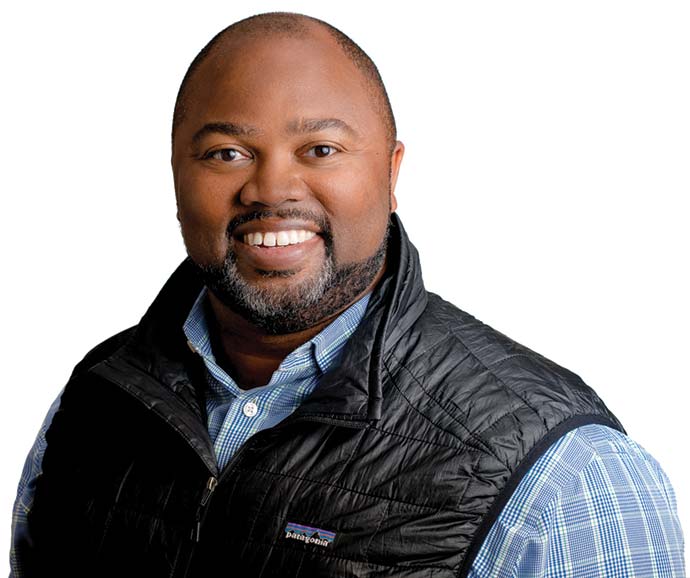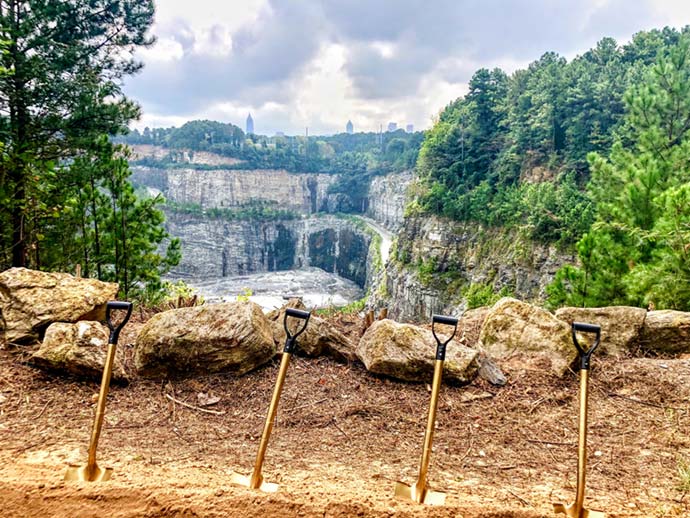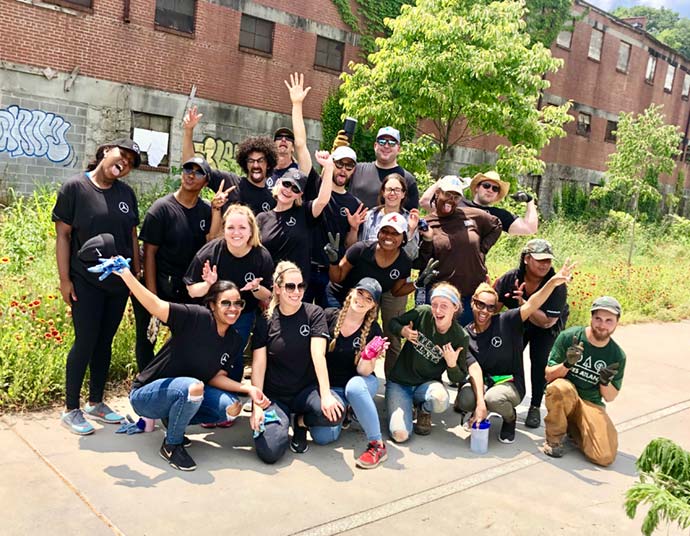In the same city where this year gifts of $34 million in student debt payoffs and $13 million in scholarship donations have come to Morehouse College from billionaires Robert Smith and Oprah Winfrey, respectively, you don’t have to go far from the college’s property in the cluster of four historically black colleges and universities (HBCUs) known as Atlanta University Center to see that college town amenities are few and far between in an area a hop, skip and jump from Arthur Blank’s palatial Mercedes-Benz Stadium.

“I’m a graduate of Clark Atlanta University, and very aware of the plight of the HBCUs,” says Deborah Scott, a 2012 White House Champion of Change who serves as executive director of Georgia Stand-UP (a “Think and Act Tank for Working Communities”), founder of skills training and workforce development program TRADE-UP, vice-chair of the National Board of Directors of the Partnership for Working Families, and a founding member of the TransFormation Alliance, an Atlanta group focused on equitable transit-oriented development. Not only have such institutions faced their own financial issues, but development around them — like development in undervalued black communities in general — has lagged. There is a perennial shortage of student housing and retail.
“The lack of housing is real, for students as well as the community,” Scott says. “I look at Tech Square [the successful mixed-use district that incorporates part of Georgia Tech’s campus] and I’m amazed and excited, but the same things could exist for the Atlanta University Center.”
That’s not to say there isn’t progress. Last fall, Morehouse School of Medicine and developer Carter broke ground on a 7.2-acre mixed-use development expected to be complete by the 2020 school year that will include 187 units of graduate student housing. “We believe this project will anchor the southern gateway to the AU Center and the Westside of Atlanta while catalyzing more activity in the area,” said Scott Taylor, president and CEO of Carter.
Meanwhile, this fall, the Arthur M. Blank Family Foundation awarded a $17.5 million grant to the Atlanta BeltLine Partnership to support development of Westside Park, whose first phase will also open in 2020 and whose eventual 280-acre footprint will constitute the city’s biggest greenspace. The grant joins with initial funding of $26.5 million from the city, and is the lead gift in a forthcoming capital campaign led by the Partnership, whose Beltline redevelopment is the toast of city planners around the nation.
Scott just wants to see such investment and dedication replicated in other areas such as Fair Street and the MLK corridor, “neighborhoods rich in history and culture that really have been starved economically,” she says. “Reversing that means you need a partnership and plan, commitment for long-term growth from those who see it as a wise investment and not just ‘Well, let’s throw them a bone.’

“I find most of these communities and institutions are not against development,” says Scott, whose group has worked with residents and community leaders to protest incentives awarded to developers for redevelopment of The Gulch, the new home for the Norfolk Southern corporate headquarters. “They’re for the equity conversation — ‘How does this help us? How do we get the kinds of products and services we need, so our dollar doesn’t just swirl around one or two times, while in other communities it’s six or seven times?’
One way is to make sure leaders are talking to one another.
“We were on the bus in Atlanta, and one of the leaders of the tour was there with a leader of one of the prominent African American communities,” says David Hall, a Morehouse College graduate who is a partner at Rise of the Rest (ROTR) Seed Fund. He helps Steve Case and the rest of the team convene regional Rise of the Rest bus tours around the country, visiting five cities in five days and investing at least $500,000 in local startups through pitch competitions. “I asked, ‘How often do you guys get together? There seems to be a great overlap.’ And they said, ‘We don’t know each other.’ It was unbelievable to us that two of the big ecosystem organization leaders didn’t even know each other. Bringing these communities together was really powerful. In Columbus, Ohio, we had a roundtable where we were talking about equity and inclusion in the startup ecosystem. A white guy who ran a company said, ‘How do we work to include diverse voices?’ There was a four- or five-second beat of silence, and a black guy said, ‘You invite us.’ I think there’s some obviously low-hanging fruit.”
Dr. Raphael W. Bostic, president and CEO of the Federal Reserve Bank of Atlanta, says one pillar of the bank’s strategic plan is to increase economic mobility and resilience, “which at its heart is about communities that have not been as robustly attached to the U.S. economy.” He also sees a need for more broad-based commitment across sectors. Every city has its unique narrative, he says, which often can come down to the personalities, visions and decisions of distinct individuals. “Different places will have different mixes,” he says, noting the paths taken by Atlanta and Birmingham, Alabama. “Here in Atlanta, Dan Cathy and Arthur Blank have committed to redevelop the area around Mercedes-Benz Stadium, and pledged to do it in a way that’s not disruptive. The framework will be locally driven.”
One of the leaders in Birmingham is Victor Brown, the vice president of business development at Birmingham Business Alliance who at one time was the Atlanta-based business manager for musicians and producers Outkast and Organized Noize before moving into commercial real estate and economic development. He compares a new data center project from Atlanta-based DC Blox in the black community of Titusville in Birmingham (where Condoleeza Rice grew up) to the past location of the headquarters of H.J. Russell, the national minority-owned construction contractor, on Fair St. in Atlanta.

“He didn’t have to locate on Fair Street,” Brown says, “but the impact you have in a community is people can see what success looks like outside what has organically come up in the neighborhood. It can really shift the thinking.”
Andre Perry, the David M. Rubenstein Fellow at the Brookings Institution’s Metropolitan Policy Program, focuses his research on race and structural inequality, education, and economic inclusion. He sees a lot to like in Atlanta that you don’t find in many other cities, and corporations stepping to the plate are a big reason why.
“You don’t get the black middle class the way you do in Atlanta without Delta, without the airport, without [former Atlanta Mayor] Maynard Jackson strategically leveraging contracts,” he says. “You see it with Delta, UPS, Coca-Cola, major companies with headquarters hiring significant numbers of black people. There are significant levels of poverty in Atlanta like a lot of cities. But there are large numbers of black people living the American dream — they can own a home, have some type of retirement fund, pass things along to their children. It comes not just from individuals trusting black people, but from major corporations making a home in a black city, and saying, ‘I’m going to trust that blacks can take my company to the next level.’”
A promising resource for economic growth beyond corporate largesse and social responsibility is individual entrepreneurs themselves. Below are two Atlanta stories about startups, an emerging technology scene, and how both can intersect with the city’s black communities.

